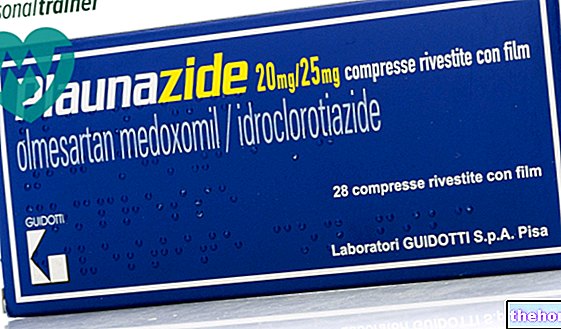Active ingredients: Magnesium hydroxide, Aluminum oxide
MAALOX TC 6 g + 12 g oral suspension
MAALOX TC 300 mg + 600 mg chewable tablets
Why is Maalox TC used? What is it for?
For the prevention of stress-induced gastroduodenal bleeding.
As an antacid in the symptomatic therapy of heartburn and epigastric pain associated with peptic ulcer or other gastrointestinal pathology, where a high neutralizing capacity is required.
Contraindications When Maalox TC should not be used
Hypersensitivity to the active substances or to any of the excipients.
Contraindicated in patients with porphyria. Severe forms of renal insufficiency (creatinine clearance less than 30 mL / min).
Generally contraindicated in pediatric age. State of cachexia (state of general decay of the organism).
Precautions for use What you need to know before taking Maalox TC
Do not take more than 3 tablespoons / 3 sachets (45 ml) of suspension or 9 tablets in 24 hours or this dosage for more than 2 weeks or use the product in case of kidney disease unless on medical advice.
Interactions Which drugs or foods can modify the effect of Maalox TC
Tell your doctor or pharmacist if you have recently taken any other medicines, even those without a prescription.
Since Al and Mg salts reduce the gastrointestinal absorption of tetracyclines, it is recommended to avoid taking MAALOX TC during oral tetracycline therapy.
The use of aluminum-containing antacids may reduce the absorption of drugs such as H2-antagonists, atenolol, cefdinir, cefpodoxime, chloroquine, tetracyclines, diflunisal, digoxin, bisphosphonates, ethambutol, fluoroquinolones, sodium fluoride, glucocorticoids, indomethacine, is ketoconazole, levothyroxine, lincosamides, metoprolol, phenothiazine neuroleptics, penicillamines, propranolol, rosuvastatin, iron salts.
- Polystyrene sulphonate (Kayexalate) Caution is advised when the medicinal product is taken together with polystyrene sulphonate (Kayexalate) due to the risk of reduced efficacy of the resin in binding potassium, of metabolic alkalosis in patients with renal impairment (reported with aluminum hydroxide and hydroxide of magnesium), and intestinal obstruction (reported with aluminum hydroxide).
- Aluminum hydroxide and citrates can cause an increase in aluminum levels, especially in patients with renal impairment.
Allow at least two hours (4 for fluoroquinolones) before taking MAALOX TC to avoid interaction with other drugs. The concomitant use of quinidine can lead to an increase in serum quinidine levels and lead to an overdose of quinidine. .
The simultaneous use of aluminum hydroxide and citrates can lead to an increase in aluminum levels, particularly in patients with renal insufficiency.
Warnings It is important to know that:
Aluminum hydroxide can cause constipation and an overdose of magnesium salts can cause bowel hypomotility; high doses of this medicine can cause or aggravate intestinal obstruction and ileus in patients at higher risk, such as those with renal impairment, with underlying constipation, with impaired intestinal motility, in children (0 to 24 months) , or elderly.
Aluminum hydroxide is not well absorbed from the gastrointestinal tract, and systemic effects are therefore rare in patients with normal renal function.
However, excessive doses or long-term use, or even normal doses in patients with low phosphorus diets or in children (0 to 24 months), can lead to phosphate elimination (due to an aluminum-phosphate bond) accompanied by an increase in bone resorption and hypercalciuria (presence of a large amount of calcium in the urine) with the risk of osteomalacia. It is advisable to consult your doctor in case of long-term use or in patients at risk of abnormal reduction of phosphate levels in the blood.
In patients with renal impairment, plasma levels of aluminum and magnesium tend to increase causing hyperalluminaemia (excess levels of aluminum in the blood) and hypermagnesaemia (excess levels of magnesium in the blood).
Therefore, prolonged use of the medicinal product should be avoided in such patients. In these patients, long exposures to high doses of aluminum and magnesium salts may lead to encephalopathies, dementia, microcytic anemia or worsening of osteomalacia due to dialysis.
Aluminum hydroxide may not be safe in patients with porphyria undergoing hemodialysis.
In the presence of severe forms of renal insufficiency it is recommended to take the product under the direct supervision of a doctor. Prolonged use of the medicine should be avoided in these patients. Maalox TC tablets contain sucrose; this should be taken into account in case of diabetes or low-calorie diets. Due to the presence of sucrose, patients with rare hereditary problems of fructose intolerance , glucose-galactose malabsorption or sucrase-isomaltase deficiency should not take MAALOX TC chewable tablets.
Due to the presence of sorbitol both in the oral suspension and in the tablets, patients with rare hereditary problems of fructose intolerance should not take MAALOX TC.
WHAT TO DO DURING PREGNANCY AND BREASTFEEDING
The medicine should only be used when needed, under direct medical supervision, after evaluating the expected benefit to the mother in relation to the possible risk to the fetus or infant. Due to limited maternal absorption when taken according to the indicated dosage (see section "How to use this medicine"), aluminum hydroxide and its combinations with magnesium salts are considered compatible with breastfeeding. Ask your doctor or pharmacist for advice before taking the medicine.
EFFECTS ON THE ABILITY TO DRIVE VEHICLES AND ON THE USE OF MACHINERY
MAALOX TC does not affect the ability to drive or use machines.
Dose, Method and Time of Administration How to use Maalox TC: Posology
Prevention of upper gastrointestinal stress bleeding
Determine the pH of the gastric aspirate, then introduce through a nasogastric tube 10 ml of Maalox TC oral suspension together with 30 ml of water. Check every hour, by aspiration, if the gastric content is at pH> 4. If it is lower , introduce a double quantity of Maalox TC oral suspension with 30 ml of water until a pH> 4 is ensured.
Symptomatic therapy
15 ml, a spoon or a sachet of suspension or 3 well chewed or sucked tablets, one "hour after meals and before bedtime or according to the judgment of the doctor. Dosage regimens with higher dosages can be used, under the direct supervision of the doctor. doctor, in the treatment of peptic ulcer.
Pediatric administration of the drug is not recommended.
Shake the suspension well before use. The tablets should be well chewed or sucked.
Overdose What to do if you have taken too much Maalox TC
Experience with deliberate overdose is very limited. Cases of overdose with aluminum salts are more likely to occur in patients with chronic severe renal impairment with the following symptoms: encephalopathy, seizures and dementia, hypermagnesaemia (excessive increase in blood magnesium levels ).
The most frequently reported symptoms of acute overdose with aluminum hydroxide and in combination with magnesium salts include diarrhea, abdominal pain and vomiting.
High doses of this medicine can cause or aggravate intestinal obstruction and ileus in patients at risk (see section "It is important to know that").
As in all cases of overdose, treatment should be symptomatic with generic supportive measures.
Aluminum and magnesium are eliminated by urinary excretion; treatment of magnesium overdose involves rehydration and forced diuresis. In case of renal insufficiency, hemodialysis or peritoneal dialysis is required.
In case of accidental ingestion / intake of a dose of Maalox TC, notify your doctor immediately and go to the nearest hospital.
If you have any questions about the use of Maalox TC, ask your doctor or pharmacist.
Side Effects What are the side effects of Maalox TC
Like all medicines, Maalox TC can cause side effects, although not everybody gets them. Side effects are not common at recommended doses.
Immune system disorders:
Frequency not known (frequency cannot be estimated from the available data): angioedema, anaphylactic reactions, hypersensitivity reactions, urticaria, pruritus.
Gastrointestinal disorders:
Uncommon (≥1 / 1000,
Metabolism and nutrition disorders:
Frequency not known (frequency cannot be estimated from the available data): excessive increase in levels of: aluminum, magnesium, in the blood; abnormal reduction in phosphate levels, during prolonged use or at high doses or even at normal doses of the medicine in patients on low phosphorus diets or in children (0 to 24 months), which can cause increased bone resorption, hypercalciuria, osteomalacia (see section "It is important to know that").
Occasionally, an acceleration of intestinal transit may occur following excessive use. Occasionally, regurgitation may occur at the recommended dosages for the prevention of stress-induced gastro-duodenal bleeding.
Compliance with the instructions contained in the package leaflet reduces the risk of undesirable effects.
If any of the side effects gets serious or if you notice any side effects not listed in this leaflet, please inform your doctor or pharmacist.
Expiry and Retention
Expiry: see the expiry date indicated on the package. The expiry date refers to the product in intact packaging, correctly stored.
Warning: do not use the medicine after the expiry date indicated on the package.
Oral suspension: store at a temperature not lower than + 4 ° C.
Bottle: keep the bottle tightly closed
Medicines should not be disposed of via wastewater or household waste. Ask your pharmacist how to dispose of medicines you no longer use. This will help protect the environment.
Keep this medicine out of the reach and sight of children.
Composition and pharmaceutical form
COMPOSITION 100 ml of suspension contain:
Active principles:
magnesium hydroxide 6.00 g
aluminum hydroxide dry gel 12.00 g
Excipients: methyl parahydroxybenzoate, propyl parahydroxybenzoate, guar gum, 70% sorbitol solution, citric acid, mint essence, purified water.
One tablet contains:
Active principles:
magnesium hydroxide 300 mg
aluminum oxide, hydrate 600 mg
Excipients: mannitol, granular mannitol, sucrose, sorbitol 70% solution, glycerin, vaseline oil, Swiss cream flavor, mint essence, lemon flavor, magnesium stearate, talc.
PHARMACEUTICAL FORM AND CONTENT
Oral suspension: box of 15 sachets of 15 ml, bottle of 200 ml
Chewable tablets: box of 40 tablets.
Source Package Leaflet: AIFA (Italian Medicines Agency). Content published in January 2016. The information present may not be up-to-date.
To have access to the most up-to-date version, it is advisable to access the AIFA (Italian Medicines Agency) website. Disclaimer and useful information.
01.0 NAME OF THE MEDICINAL PRODUCT
MAALOX TC
02.0 QUALITATIVE AND QUANTITATIVE COMPOSITION
100 ml of suspension contain:
Active principles:
• magnesium hydroxide 6.00 g
• aluminum hydroxide dry gel 12.00 g
One tablet contains:
Active principles:
• magnesium hydroxide 300 mg
• aluminum oxide, hydrate 600 mg
For the full list of excipients, see section 6.1.
03.0 PHARMACEUTICAL FORM
Oral suspension.
Chewable tablets.
04.0 CLINICAL INFORMATION
04.1 Therapeutic indications
For the prevention of stress-induced gastro-duodenal bleeding.
As an antacid in the symptomatic therapy of heartburn and epigastric pain associated with peptic ulcer or other gastro-intestinal pathology, where a high neutralizing capacity is required.
04.2 Posology and method of administration
Prevention of upper gastrointestinal stress bleeding
Determine the pH of the gastric aspirate, then introduce through a nasogastric tube 10 ml of Maalox TC oral suspension together with 30 ml of water. Check every hour, by aspiration, if the gastric content is at pH> 4.
If it is lower, introduce a double quantity of Maalox TC oral suspension with 30 ml of water until a pH> 4 is ensured.
Symptomatic therapy
15 ml, 1 tablespoon or a sachet of suspension or 3 well chewed or sucked tablets, one "hour after meals and before going to bed or according to the judgment of the doctor.
Dosage regimens with higher dosages can be used, under the direct supervision of the physician, in the treatment of peptic ulcer.
Pediatric administration of the drug is not recommended.
04.3 Contraindications
Hypersensitivity to the active substances or to any of the excipients.
Contraindicated in patients with porphyria.
Severe forms of renal failure (see section 4.4).
Generally contraindicated in pediatric age.
State of cachexia.
04.4 Special warnings and appropriate precautions for use
Do not take more than 3 tablespoons / 3 sachets (45 ml) of suspension or 9 tablets in 24 hours or such dosage for more than two weeks.
Like other aluminum products, the medicine can have an astringent effect and cause constipation. In high doses it can cause intestinal obstruction.
For diets low in phosphorus, be aware that aluminum hydroxide can cause phosphorus deficiency.
In patients with renal insufficiency, plasma levels of aluminum and magnesium tend to increase. In these patients, long exposures to high doses of aluminum and magnesium salts can lead to encephalopathies, dementia, microcytic anemia or worsening of dialysis osteomalacia.
Aluminum hydroxide may not be safe in patients with porphyria undergoing hemodialysis.
In the presence of severe forms of renal insufficiency it is recommended to take the product under the direct supervision of a doctor. Prolonged use of the medicinal product should be avoided in these patients.
In case of diabetes or low-calorie diets, it should be noted that MAALOX TC chewable tablets contain sucrose.
Due to the presence of sucrose, patients with rare hereditary problems of fructose intolerance, glucose-galactose malabsorption or sucrose isomaltase insufficiency should not take MAALOX TC chewable tablets.
Due to the presence of sorbitol, patients with rare hereditary problems of fructose intolerance should not take MAALOX TC.
04.5 Interactions with other medicinal products and other forms of interaction
Since the Al and Mg salts reduce the gastrointestinal absorption of tetracyclines, it is recommended to avoid taking Maalox during oral tetracycline therapies.
The use of aluminum-containing antacids may reduce the absorption of H2-antagonists, atenolol, chloroquine, tetracyclines, diflunisal, digoxine, bisphosphonates, ethambutol, fluoroquinolones, sodium fluoride, glucocorticoids, indomethacin, isoniazid, kayexalate, ketoprincosphonates, , phenothiazine neuroleptics, penicillamines, propranolol, iron salts.
Allow at least two hours (4 for fluoroquinolones) before taking MAALOX TC to avoid interaction with other drugs.
Simultaneous use of quinidine may result in increased serum quinidine levels and lead to quinidine overdose.
The simultaneous use of aluminum hydroxide and citrates can lead to an increase in aluminum levels, particularly in patients with renal insufficiency.
04.6 Pregnancy and lactation
The medicine should only be used when needed, under direct medical supervision, after evaluating the expected benefit to the mother in relation to the possible risk to the fetus or infant.
04.7 Effects on ability to drive and use machines
The drug does not affect the ability to drive and use machines.
04.8 Undesirable effects
Side effects are not common at recommended doses. Occasionally, after excessive use, there may be an acceleration of intestinal transit. Occasionally there may be regurgitation at the dosages recommended for the prevention of gastro-duodenal haemorrhages induced by stress.
04.9 Overdose
Experience with deliberate overdose is very limited. Cases of overdose with aluminum salts are more likely to occur in patients with severe chronic renal insufficiency with the following symptoms: encephalopathy, seizures and dementia. As in all overdose cases, treatment should be symptomatic by taking general supportive measures.
05.0 PHARMACOLOGICAL PROPERTIES
05.1 Pharmacodynamic properties
Pharmacotherapeutic group: Antacids; ATC code: A02AD01.
The antacid activity is expressed in the stomach where, in suitable doses, the magnesium hydroxide and the aluminum hydroxide neutralize the gastric acid production.
The constipating effect of aluminum hydroxide is counteracted by the laxative effect of magnesium hydroxide, thus allowing to reach highly therapeutic doses also in the treatment of peptic ulcer and in the prevention of stress bleeding in the upper gastrointestinal tract.
05.2 Pharmacokinetic properties
When administered orally, the aluminum hydroxide and magnesium hydroxide react with the hydrochloric acid produced in the stomach to form salts, which are only partially absorbed.
The excretion of the absorbed salts occurs mainly via the urine.
05.3 Preclinical safety data
The toxicological tests on the animal have shown the non-existent toxicity in relation to the therapeutic index. In fact, using the maximum doses compatible with the oral administration methods, in various animal species, it was not possible to demonstrate an acute, subacute harmful action. and chronic.
06.0 PHARMACEUTICAL INFORMATION
06.1 Excipients
Oral suspension
Methyl parahydroxybenzoate; propyl parahydroxybenzoate; guar gum; sorbitol solution 70%; citric acid; mint essence; purified water.
Chewable tablets
Mannitol; granular mannitol; sucrose; sorbitol solution 70%; glycerine; vaseline oil; Swiss cream flavor; mint essence; lemon flavor; magnesium stearate; talc.
06.2 Incompatibility
There are no known chemical incompatibilities.
06.3 Period of validity
3 years
06.4 Special precautions for storage
Oral suspension: store at a temperature not lower than + 4 ° C.
Keep the bottle tightly closed.
06.5 Nature of the immediate packaging and contents of the package
Oral suspension:
• 15 sachets of 15 ml
• 200 ml bottle
Chewable tablets:
• box of 40 tablets
06.6 Instructions for use and handling
Oral suspension: shake well before use.
Chewable tablets: the tablets should be well chewed or sucked.
07.0 MARKETING AUTHORIZATION HOLDER
Sanofi-aventis S.p.A.
Viale L. Bodio, 37 / b
IT-20158 Milan (Italy)
08.0 MARKETING AUTHORIZATION NUMBER
Maalox TC oral suspension, 15 sachets of 15 ml - AIC 020702130
Maalox TC oral suspension, 200 ml bottle - AIC 020702155
Maalox TC 300 mg + 600 mg chewable tablets, 40 tablets - AIC 020702167
09.0 DATE OF FIRST AUTHORIZATION OR RENEWAL OF THE AUTHORIZATION
Date of first authorization:
• 15 sachets 15 ml 27.07.1985
• 200 ml bottle 10.05.1986
• 40 tablets 09.29.1988
Last renewal date: 31.05.2005
10.0 DATE OF REVISION OF THE TEXT
April 2008




























